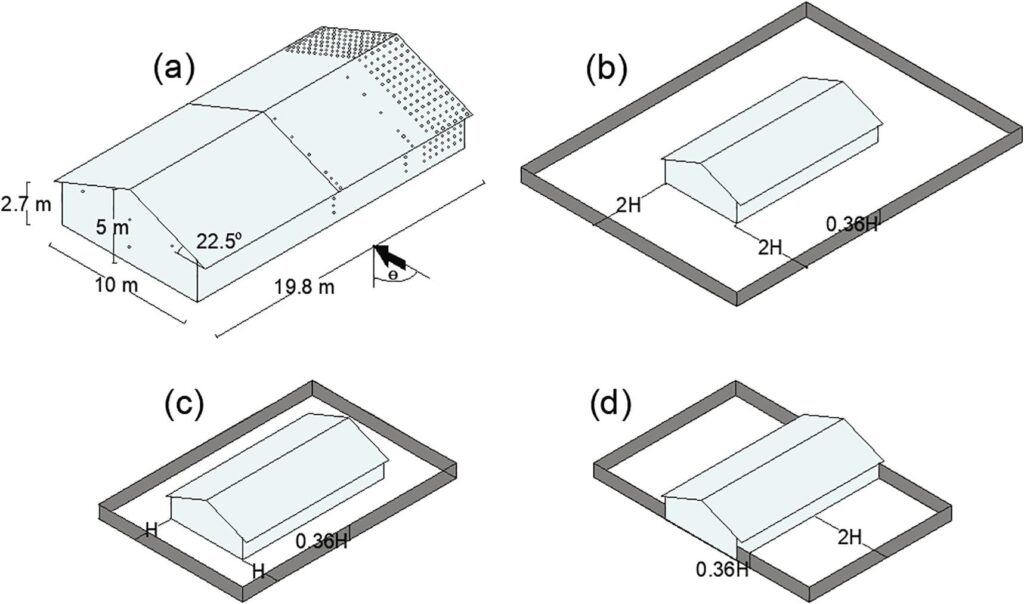Deviation of mean pressure coefficients in wind loading standards for a low-rise, gable-roofed building with boundary walls
The provisions in wind loading standards routinely overlook the influence of nearby small-size objects on wind loads of low-rise buildings. One such object is boundary walls that significantly modify the surrounding wind field thereby affecting the wind loading of low-rise buildings. To investigate this phenomenon, four low-rise, gable-roofed buildings: one with and three without boundary walls were tested in a boundary layer wind tunnel. The calculated external pressure coefficients (Cp) were subsequently compared with the provisions given in ASCE 7 (2016), NBCC (2015), EN 1991-1-4 (2005), and AS/NZS 1170.2 (2011). The comparison showed a good agreement for the Cp calculated using ASCE 7-16 (2016) and AS/NZS 1170.2 (2011) for the building without boundary walls with those of the wind tunnel test. However, all wind loading standards overestimated Cp of the buildings with boundary walls because they did not account for the shielding effect of boundary walls. The largest discrepancies in magnitude and distribution of wind pressure were observed on the windward wall and the upwind roof slope. These modifications showed a strong dependency on the upstream and lateral separation distances between the building and the boundary walls.
Read more



